'I Performed The World's First Pig Heart Transplant'
I've been a heart surgeon for 40 years. I was always a kid who liked to help people and around the time I was leaving high school, the first heart transplant was undertaken in South Africa, followed by many others, even one in my hometown of Pittsburgh. It just seemed really quite fantastic.
Even as a young surgeon I was interested in the "new." In Pittsburgh, we were doing more heart transplants than anyone in the country, fortified with some of the newest medicines. Renowned surgeon Dr. Thomas Starzl had come to Pittsburgh, where I was working, and made us feel that we could do more than most people would think they could ever do. We took off in our own little world; the world of hearts.
I was also able to watch Dr. Starzl perform one of two baboon-to-human liver transplants, so I've been aware of xenotransplantation—efforts to humanize animal organs for transplantation—for a number of years. There was a concentrated effort going on from a company named Revivicor, they just kept working the problem. But I only got into the act in a major way five years ago when my partner, Dr. Muhammad Mohiuddin, came to the University of Maryland School of Medicine.
Dr. Mohiuddin had experimented transplanting a pig heart with three gene edits into baboons and had had a couple of baboons who lived a long time on a very specialized immunosuppressive protocol that he had developed. One of them had lived for three years. I was amazed.
We're now all the way up to 10 gene edits on these cloned pig hearts. Despite the fact that there are 100,000 genes in the pig and we're only changing 10 you can get unintended consequences. It has been a lot of hard work with cloning and now the newer techniques to permit the removal and insertion of genes. Our group has been completing these genetically modified pig heart transplants into baboons for some years now. It would take your breath away to see four or five baboons surviving well after transplant, including one male who lived to nine months.
On November 27, 2021, David Bennett came to my cardiac surgical intensive care unit (ICU). He had been transferred there because one of my colleagues had put him on a temporary artificial heart-lung bypass machine. David had been on three intravenous medications to help his heart to work better and was also using a balloon pump through an artery in his groin to help his heart be more efficient. But all of a sudden, his heart had begun to have these very bizarre rhythms that caused the heart to really shake and not beat. When that happens there is no blood flow through the body and cardiac arrest occurs. David probably wouldn't have survived the night without that heart-lung bypass machine.
As he is only 57 and, overall, looked reasonably good at that time, we began to see if we could hurry up and get him qualified for a heart transplant. However, we ran into a very severe obstacle, David hadn't been medically compliant in the past and therefore wasn't up to a standard that we require for human heart transplantation.
With David as someone with no alternatives, who very likely wouldn't be able to leave the hospital without a transplant, I began to wonder if we could get an emergency authorization for a genetically modified pig heart transplant.
Dr. Starzl was one of those people who would always say: "If you think it's going to work, just do it." Another mentor of mine, Dr. Henry Bahnson, always said: "If you think it's going to work, be brave. Try it." So I came out of that arena of gladiators. People who took on disease and were kicking and fighting their way to new knowledge to help patients.
David was seen by a huge number of medical professionals, as well as four psychiatrists here before we went ahead with this transplant just to be sure that he could understand what he was going to consent to. All those elements had to align before we could go forward and even offer him this genetically modified pig's heart.
I spoke to him about it in mid-December and he did say he would much rather have a human heart. We said that we couldn't offer him one and when we told him it was a pig, he said: "Will I oink after it's implanted?" It told me at least that he understood what I was telling him.
But I knew nothing about his arrest so I didn't ask him about it. I do know that his most immediate previous full employment was being a bus driver for elderly home patients. He had a rough life. But I don't really know about his past behaviors or why something might have happened. We don't look at incarceration history and things like that, I think that's unethical. And it didn't enter into our discussion when we were trying to consider him as a human heart transplant candidate. I felt very confident that none of us knew anything about this particular issue that was so very long ago.
Once David consented, the next big hurdle was to get permission to do this. The company sponsor Revivicor has classified this genetically manipulated heart as a drug not as a device, so we filled out an Investigational New Drug (IND) application and pushed the button on December 20. My partner Dr. Mohiuddin knows more about pig heart to baboon xenotransplantation than anybody in the world, so we had quite a dossier to submit.
I was so impressed with our Food and Drug Administration (FDA). I was prepared to receive very bad news, because this is a pretty big deal: A discordant animal implant for life-saving purposes. It took them 10 days to respond. On New Year's Eve, I got an email saying our request was approved. I couldn't believe it. I don't think anybody really, in their heart of hearts, thought we would be approved.
Through the whole process of waiting 10 days for the FDA approval and another five days for the hospital to prepare for the surgery, David, literally on the teeter-totter of life, hung in there. This guy is tough.
But we couldn't tell him until 12 hours before surgery, because we didn't have approval to do it until then. He was very ill at that point, breathing and thinking were strenuous for him. He wanted to know what his chances were and I said that it may be a day, a week, a month or a year. We really don't know and I couldn't tell him what the real risks were. He said: "Well, I don't want to die. So let's do it. And if I do die, somebody will learn something." It sounds a little schmaltzy but it's true. That's really what he felt about it.
I was nervous on the day of the surgery, January 7, because there was a lot riding on this. No one really expected success I think, because it's so fantastical. But we did; Dr. Mohiuddin and I.
This is what Dr. Mohiuddin had prepared for his whole life. To see his life's work put on the line, he was so nervous he couldn't sit still. He wasn't ever sure that he would live long enough to see what he had worked on potentially benefit a human.
But very soon, it became work and what we do every day. Being a surgeon, I didn't have any qualms about the technical piece of it. We quickly moved to the animal laboratory where we removed the donor pig's heart. It was safely placed in a chamber with a blood solution circulating through it to help keep it healthy, and then it was transported to the hospital.
We had a moment of quiet before we started the surgery. It was a moment of reflection about what we were doing and its impact not only on the patient, but beyond. We asked everybody to think about that for about 30 seconds before we did anything. My current boss, Dr. Bradley Taylor, two resident trainees and many other staff were by my side. It was such a treasure to share this with them.
Then, I was comfortable to go forward and make an incision on David. After that, it was really just grinding away to do the best we could. In a manner of speaking it was very similar to most transplants I do, although it was a small pig heart and David had a big human heart, so things had to be nipped and tucked in order to make it fit.
The surgery took from 8am until about 5pm and when we were finally ready to put the human blood through that organ it was almost a moment of reverence. I took the clamp off the heart and we gave it one little jolt of electricity. Then, it was off and running. There were some tears and awe-like inspiration in the room. And there was joy as the heart started to pick up and squeeze like a normal heart.
We had David on the heart-lung bypass machine that he'd been on for 50 days and, frankly, I was too afraid to take it off then. It was like training wheels; if I had removed that machine and anything had happened unexpectedly to the heart, we wouldn't have been able to save David. So, we left him on that machine for 48 hours.
How do you measure success? Was it enough just to see the heart beating? It might have been. We then began watching the cardiogram and the heart's ability to make blood pressure. Was it going to be rejected and the small arteries just fall off? Then the heart would go into no real rhythm and just be sitting in his chest. But the initial charge of that heart when it got that human blood was just remarkable and it sustained us and extinguished our fears a little bit.
That night, by golly, I didn't get one phone call after midnight about David. He was very stable into the next morning and he just kept getting better through the weekend. Ultimately his heart is still charging like crazy. We did a cardiac echo on Monday which gives us a view of how well the heart squeezes. It looked like a rock star and it does have rock star status here!
David woke up right away the next morning and when I spoke to him and said, "You've got your new heart." He looked at me and said: "Thank you." It made me cry. It's simple, but he meant it and it was pretty special. All patients are precious to their surgeons. In the field I work in, you have to have selective memory in order to come to work every day. Not everything works out.
We took David off the heart-lung bypass machine on Monday, January 10. He's very alert. His son has come to visit him and he's had very meaningful interchanges with his son. Our physical therapist wrote to me that he had sat up on the edge of his bed on Thursday, January 13, dangling his feet. That is fabulous. We didn't expect that. It is ridiculously good progress for us.
Honestly, I don't think he's going to reject this heart. I wouldn't have said that on Friday, January 7 or even Saturday, January 8, but we would be disappointed if he doesn't do at least as well as our average animal studies have been doing. Our animals are going into six months.
I've seen human heart transplant patients recover less well. David was much sicker than our current transplant patient. So it's unfair to say exactly, but in spite of that handicap, you wouldn't know that he didn't have a great, functioning human heart transplant.
David's legs are so weak that I can't be sure when he will be walking. He's prepared for some time in a wheelchair and has accepted that. In terms of being up and around with a little wheelchair help, I suspect that will happen during the week starting January 17.
We've maximized the amount of immune suppression medication that we think he can tolerate; there's a very complicated regimen of medication that had to be given on a timely basis and Dr. Mohiuddin owned that. We couldn't have done any of this without him and I wouldn't have dared not have him with us.

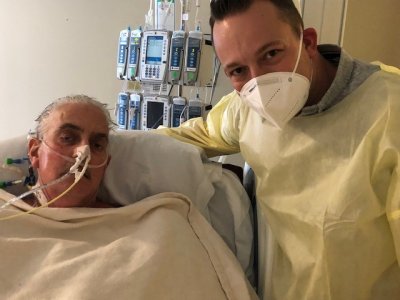
I kind of have a reputation for trying to enjoy life and a little bit of whimsical conversation in tough times, but we're all on earth for such a short time. It's amazing to be part of something that might make a difference in our whole field. Can you imagine if we had organs on demand for people who needed them? It would be huge.
I think people have every right to have opinions and I would humbly and vehemently disagree that this is an animal rights issue. These animals are cloned for the purpose and are treated unbelievably well. They are revered where they are born and they are taken great care of and they know no pain. But I don't think using subhuman primates is a good idea. These genetically modified pig hearts are what we call the discordant xeno; it's a mammal but far away from humans. Monkeys and chimpanzees are too close, in my opinion. I would not agree to that level of animal use. But, I'm honestly respectful of the opposite opinion. We have to always be reminded that this is a living creature and we're taking its life.
In the future, I would love to see my unit continue to make important observations and give state-of-the-art care in my area of interest. I'm also a big champion of training. I love these wonderful men and women who come and devote the most productive part of their life to this field: One that can be so competitive with all other aspects of living. They are awe-inspiring. Even though you're old it makes you feel younger. You try to give them a little bit of a push, a launch, just like I had.
I wouldn't change my life for much. It's been hard, but my goodness, I can't believe that this is actually happening to me at this point in my career. I'll just keep going. Health is a wonderful thing and to be able to apply your health to help others who don't have it, I mean, that's what being a doctor's all about.
Bartley P. Griffith MD is a professor of surgery at the University of Maryland School of Medicine. On January 7, 2022, he performed the first ever surgery transplanting a genetically modified pig heart into a human.
All views expressed in this article are the author's own.
As told to Jenny Haward.
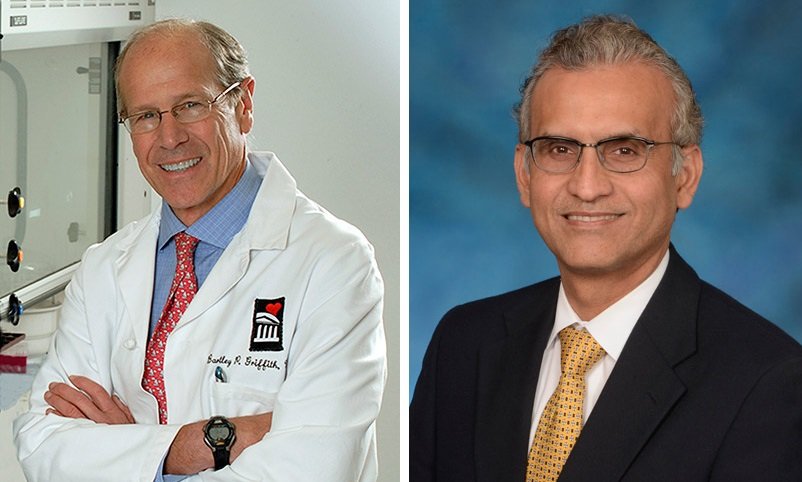
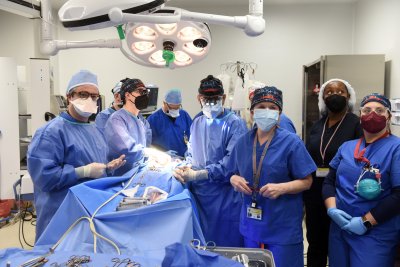
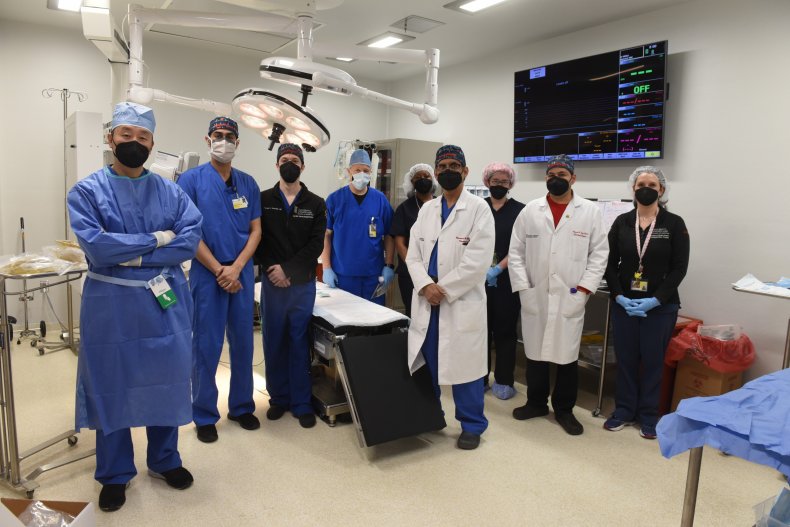
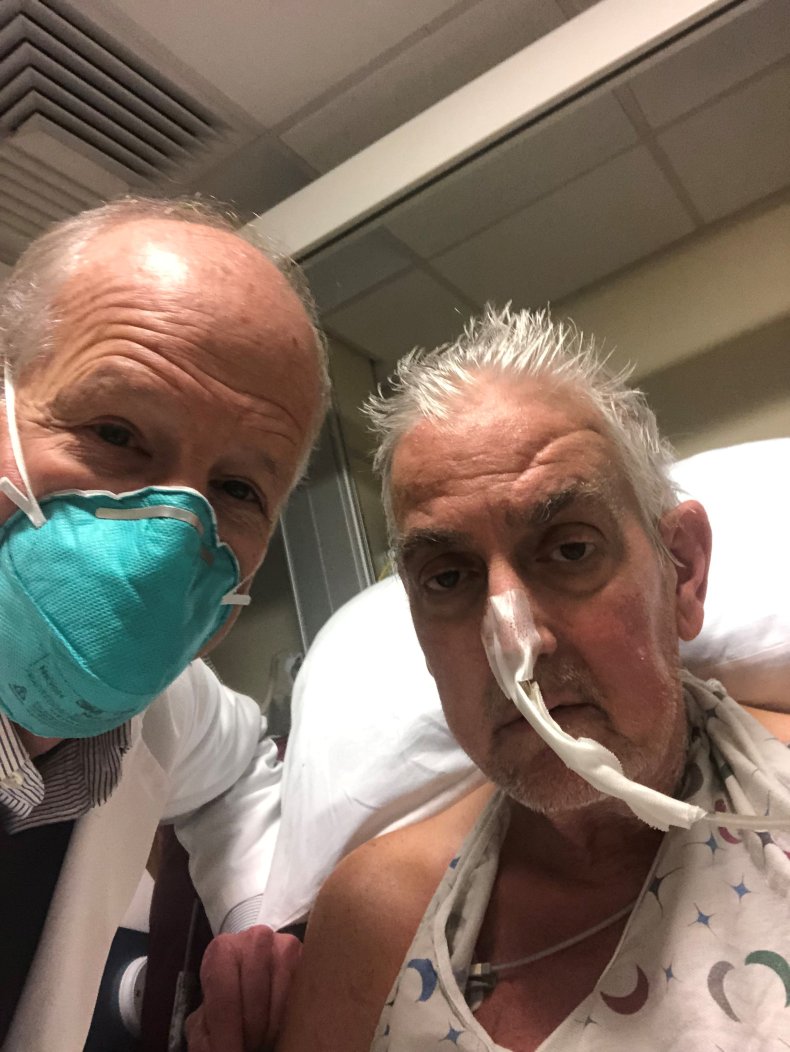
No comments:
Post a Comment